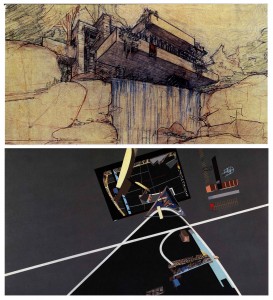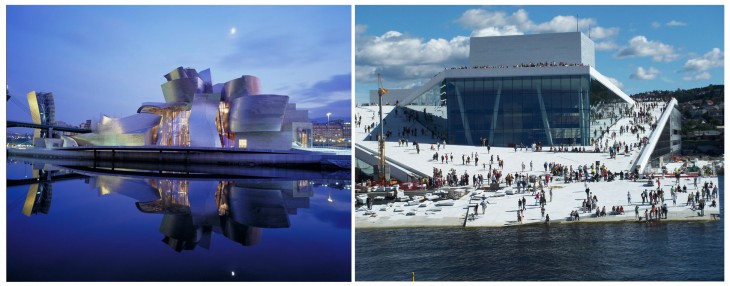An introduction into the understanding of atmospheres in architecture. From Semper and Frank Lloyd Wright through to the Situationists. Through understanding of decors people such as Debord and Costant analyzed the city and proposed projects where atmospheres could be controlled. Even Le Corbusier is claimed to have dealt with atmosphere, albeit through the removal of decor. Essentially the claim is that atmosphere permeates all architecture regardless of intent, though it is hard to pinpoint and is almost approached tangentially.
This apparent referential truth of architecture provides a rich source domain for the metaphorical power of the architecture; both Denis Hollier and Mark Wigley argue that the metaphor of inside and outside provides a general framework for representation and reason: it provides the structure to prevent thinking from collapsing. Thus the referential and metaphorical understanding of interiors in this framework eludes a sense of ‘being’ known through “a reinforced geometrism, in which limits are barriers” which reinforces a boundary between inside and outside.
However, the metaphor of inside and outside does not just order thinking alone. It also organizes our bodies, and consequently our subjectivity. It orders relations physically and symbolically: to close down, to structure, through the definition of inside and outside and finally to define zones of inclusion and exclusion. The traditional figure that divides interior from exterior is the house. The house as a figure stands for the outside where the inside contains something quite -other. Architecture, the outside, in this scene of representation, for Wigley, is seen as a pure object distanced from the impure, clamorous and heterogeneous relations represented by the body: architecture is cultivated beyond the needs of the body, and in doing so transcends the body.Contained on the inside, in the interiors, is ‘woman’ guarded and contained within architecture by a law that precedes both her and the home.
The law that domesticates her is the law of the father, the law of surveillance that centres on the taming of desire. This act of positing the feminine within the home is maintained as such, through the citation of the law, a law that is framed as beyond question. A number of distinctions are made apparent through the citation of the ‘law of the father’: a chain of signification, which frames the housing of gender as normative and natural. Men are embedded within the meaning of the exterior of the house, whereas women are confined to the inside of the home. Within this spatial displacement and confinement of the subject to particular spaces – occupation is negated.
To conclude, historically occupation is defined in relation to a solid, reassuring object which has a boundary between inside and outside. Occupation in this framework is either negated or it is about a movement solely between private and public. The first part of this paper looked critically at the historical framing of this line between inside and outside which is framed by the solidity of boundaries. We then looked at the notion of atmosphere and how it has been framed as a conceptual tool to disrupt static and representational modes of spatial thinking; through its very formlessness, its intensities, transient qualities; which questions the identity of objects and subjects as discrete envelopes, and foregrounds instead a dynamic relationship between occupation and interior architecture. These ideas were explored and tested through a studio. The attribution of the interior with atmospheric qualities in this studio was communicated through various means that more often eluded to an interior that is understood as a ‘fleshiness’ of space, circumfusing the subject and creating a series of spaces; a series of enclosures overlapping and enveloping each other.






